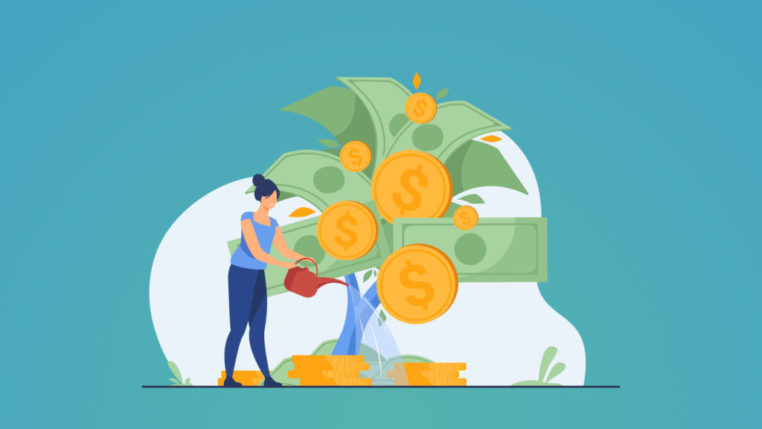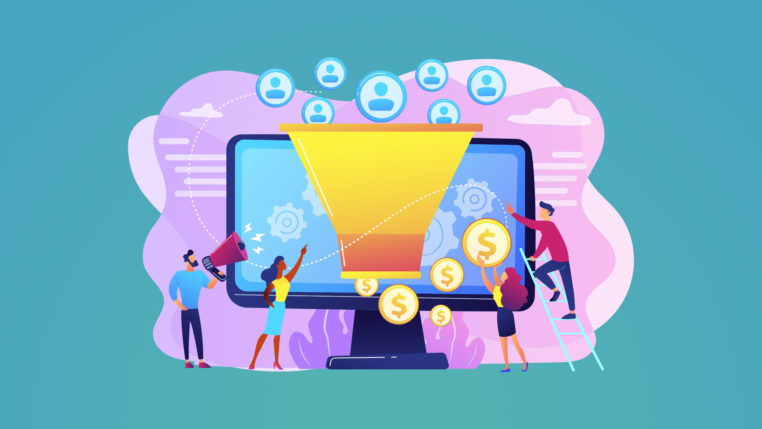What is B2B Demand Generation?

Table of Contents
B2B demand generation is an integrated marketing approach with the goal to drive awareness and demand for a product or service in the B2B marketplace. Marketing teams focus on generating leads for the sales team that result in new opportunities. Many marketing channels are worked on simultaneously to achieve the best results.
Marketing teams can work on multiple channels because various departments in the marketing team will have different objectives.
Field marketing teams typically work on hosting and sponsoring B2B trade shows. In addition, they will engage with PR agencies to create brand awareness in their sales region. Field marketing teams also work with the local partners and create leads through content syndication, for example.
The Global Campaigns Team work on high-impact webinars and often collaborate with product management and product marketing to create new assets such as eBooks and research papers. These assets are then used for content syndication.
Your social media team will work on organic and paid social media to increase your follower base and generate traffic back to your website which will result in more leads. Your SEM team has the objective to drive traffic to your website through paid advertising on search engines. They often use tools such as Semrush to find new advertising opportunities.
There are more teams involved but you get the idea. The whole marketing department chimes in to create interest in your product or services.
Why is Demand Generation important?
Demand generation is important because it accelerates business growth. The marketplace is saturated and without demand generation, it is difficult to rise above the competition. For start-ups, the right demand generation strategy is crucial to becoming profitable fast to keep the company afloat and attract new customers and investors.
Without demand generation, companies would fully rely on their sales teams and organic methods to attract customers. This is too stagnant and will result in slow business growth.
In B2B, reference cases are crucial. Naturally, the more customers you have, the easier it is to collect reference cases. It’s one of the most impactful tools to attract customers.
Through demand generation, you are able to create awareness and interest for your company at an accelerated pace. In turn, this will result in new customers and more reference cases.
How can B2B marketers stimulate demand?
B2B marketers can stimulate demand by getting the right message in front of the right persona. Most often, you need to be communicating the business value of your offerings. Channels such as webinars, advertising, events, PR, and ABM are often used to deliver this message and generate new leads.
Delivering a consistent message to your audience across multiple channels is also referred to as integrated marketing communications (IMC).
In B2B marketplaces, you will be dealing with decision-makers and influencers. These personas will require a different message to capture their interest.
Let’s say you are selling software. You will have to craft a message for the decision-makers and for people who will actually use your software. These personas both have different goals and things that they consider to be important.
It all starts with developing a deep understanding of your audience and then finding the right channels to deliver your message to them.
In B2B marketing, a fast way to generate warm leads for sales is through one-to-one meetings.
How do you create a demand generation strategy?
Creating a demand generation strategy starts with developing persona templates. After understanding your audience, you will set campaign goals. The next step is to find the best channels to reach your audience. You will then create campaigns for each marketing channel but with an integrated message.
Integrated marketing communications plays a huge role in developing a successful demand generation strategy. If people are exposed to different messages on various channels, then it will leave them with confusion. This will result in your conversion rates tanking.
An important process of demand generation is conversion rate optimization (CRO). Messages and marketing channels need to be tested and adjusted for optimal results. It’s rare that you will launch a campaign with perfect conversion rates.
A demand generation strategy needs to be flexible as you are incorporating learnings from your launched campaigns. You will find that some channels work really well whereas others might be underperforming.
What is demand generation vs lead generation?
Lead generation is a component of demand generation. Demand generation is a top-of-funnel process in which you are creating awareness and interest for your company within your target audience. With lead generation you capture the contact details of those people and warm the leads up through marketing nurture programs until they become marketing qualified leads (MQLs).
The MQLs are then handed over to the sales organization which will qualify the leads. At this point, the leads are in the middle of the funnel. When sales accepts the leads, they become Sales Qualified Leads (SQLs). The next stage is that sales creates an opportunity and if everything goes well in the sales funnel, they will become a customer.
What are the key trends in B2B demand generation?
The top 3 trends in demand generation are account-based marketing (ABM), programmatic advertising and intent-based marketing. Essentially, these tactics heavily rely on marketing data to make strategic campaign decisions and allow for heavy personalization.
Account-based marketing comes in three flavors namely:
- 1:many approaches. This is mostly done through digital campaigns. For example, a program that targets your full target account list.
- 1:few approaches. This could be campaigns targeting specific industries in your target account list such as manufacturing companies.
- 1:1 approach. This is the most resource intensive approach and these are marketing campaigns designed for a specific target account. These would be the account with the largest opportunity that justify the extra investment.
Programmatic advertising is using automation in the real-time buying and selling of digital advertisements. It allows companies to dynamically serve ads depending on who is viewing the advertisement. This allows for heavy personalization and typically results in higher performing ad campaigns.
Intent-based marketing is directing marketing campaigns at people whose online behavior shows purchase intentions. B2B intent data shows you the products or services that your target audience is researching online. Intent-based marketing helps with making campaign decisions and making marketing more effective.
What are demand generation campaigns?
Demand generation campaigns are marketing programs that are executed through various channels to create interest and awareness in your target audience. The performance of these campaigns are often measured through a metric called campaign responses.
A campaign response can be many things, it depends on how your campaign success criteria are configured. Below are some examples of campaign responses:
- A person attended a webinar;
- A person downloaded an asset;
- A person engaged in a live chat.
This brings me back to lead generation vs demand generation. It’s very uncommon that a demand generation doesn’t include a lead generation aspect.
Typical demand generation campaigns focus on two audiences:
- People who are already in your database, with the goal to activate those leads and warm them up;
- People who aren’t in your database, known as lead generation.
Examples of demand generation campaigns are:
- Webinars;
- Events;
- Paid search and social media;
- Public relations;
- Content syndication;
- Community building.
What does a demand generation manager do?
A demand generation manager oversees their team of campaign managers. The demand generation manager monitors campaigns closely and optimizes them. They study the buyer's journey and develop the strategy to best reach the target audience.
The demand generation manager is responsible for the performance of their team and spends a lot of time researching new channels and methods to create interest from your target audience.
Share this article




To accelerates business growth, demand generation is important and it used to be done by the Marketing teams with different objectives for the B2B marketplace. Most importantly, creating a demand generation strategy by getting the right message in front of the different personas to target your goal and increases our conversion rate. Well said, looking forward more to read such blogs.
Thank you!